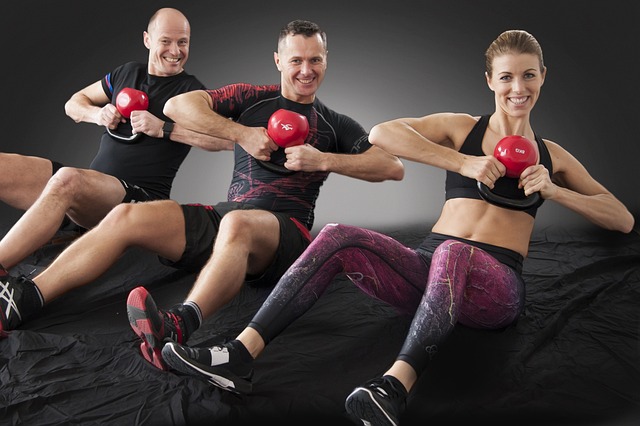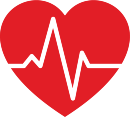
As a seasoned fitness enthusiast, I am thrilled to guide you through the journey of discovering the benefits of functional fitness and how it can enhance your strength and vitality for life. Functional fitness focuses on exercises that are natural and useful for everyday movements, bringing about a healthier and more vital version of yourself.
Understanding Functional Fitness
Functional fitness refers to exercises that simulate real-life movements, allowing you to perform everyday activities easily and without injury. It focuses on building a body capable of doing real-life activities in real-life positions, not just lifting a certain amount of weight in an idealized posture created by a gym machine.
Why Practice Functional Fitness?
-
- Increases strength in your core muscles and improves overall muscle balance.
-
- Enhances coordination and agility, which is essential for maintaining stability and preventing falls, especially as we age.
-
- Improves posture and reduces pain resulting from muscle imbalance or poor movement patterns.
-
- Prepares your body for the various physical challenges life may throw at you.
-
- Accessible to all fitness levels, with exercises easily modified to meet any individual’s needs.
Getting Started with Functional Fitness
Embarking on a functional fitness regime is straightforward. Here’s where to start:
Set Realistic Goals
Begin by setting SMART (Specific, Measurable, Achievable, Relevant, Time-bound) goals. Whether you aim to enhance your flexibility, increase muscle strength, or lose weight, setting SMART goals will help keep you on track.
Take a Holistic Approach
Consider the integration of various fitness elements such as strength, endurance, flexibility, and balance into your routine. Embrace exercises like squats, lunges, and push-ups, which involve multiple joints and muscles working together.
Consult a Professional
Before starting any new exercise program, it’s wise to consult with a fitness professional or a physical therapist, especially if you have existing health concerns or injuries. They can help tailor a program to suit your specific needs and ensure you’re performing exercises correctly to avoid injury.
Functional Fitness Program Essentials
A holistic functional fitness program should address the following components:
Core Stability
The core muscles are the foundation of functional movement. Exercises like planks, bridges, and rotational moves strengthen the core, which is essential for good posture and efficient movement.
Strength Training
Incorporate bodyweight exercises, free weights, and resistance bands to enhance muscular strength. Aim for exercises that work with multiple muscle groups, such as deadlifts and kettlebell swings.
Flexibility and Mobility
Good range of motion is necessary for performing daily movements with ease. Yoga and dynamic stretching can increase flexibility, while mobilization exercises can improve joint movement.
Cardiovascular Endurance
Activities like running, swimming, or cycling are crucial for heart health and endurance. Implement high-intensity interval training (HIIT) for a more efficient cardiovascular workout.
Balance and Coordination
Balance exercises, such as single-leg stands or stability ball workouts, will enhance your body’s response to uneven surfaces and unexpected obstacles, reducing the risk of injury.
Sample Functional Fitness Routine
Here is a beginner-friendly routine that you can try 2-3 times a week:
Warm-Up: Mobility and Dynamic Stretching
-
- Arm circles, leg swings, hip rotations – 5 minutes
-
- Light jog or brisk walk – 5 minutes
Core Activation
-
- Planks – 3 sets of 30 seconds
-
- Side planks – 3 sets of 15 seconds per side
Lower Body Circuit
-
- Squats – 3 sets of 12 reps
-
- Lunges – 3 sets of 12 reps per leg
-
- Glute bridges – 3 sets of 15 reps
Upper Body Circuit
-
- Push-ups – 3 sets of 10 reps (or modified push-ups)
-
- Dumbbell rows – 3 sets of 12 reps per arm
-
- Overhead presses – 3 sets of 12 reps
Cardiovascular Finisher: HIIT
-
- 30 seconds of high knees
-
- 30 seconds of rest
-
- 30 seconds of jumping jacks
-
- 30 seconds of rest
-
- Repeat for a total of 5-10 minutes
Cool Down: Stretching
-
- Full-body stretching routine – 5 minutes
Progressing with Functional Fitness
As your fitness level improves, so should your workout. Increase the complexity of movements, add more weight, or reduce rest periods. Try including more challenging variations of the exercises and incorporate new functional movements as you progress.
Overcoming Challenges and Staying Motivated
Plateaus and motivation dips can impede progress. To combat this, mix up your routine, set new goals, or work out with a partner. Tracking your progress and celebrating your successes can also help keep you motivated.
Nutrition and Recovery
Fueling your body with the right nutrients and allowing adequate time for recovery are as crucial as your workout. A balanced diet rich in lean proteins, whole grains, fruits, vegetables, and healthy fats will support your fitness journey. Additionally, ensure you get enough sleep and consider incorporating activities like foam rolling and massages to aid in recovery.
Conclusion
Functional fitness is not just a fad but a sustainable approach to lifelong health and vitality. By focusing on exercises that simulate everyday activities, you can build a body that performs efficiently both inside and outside the gym. Remember to listen to your body, maintain proper form, and consult professionals when necessary. Your journey to unlocking your body’s full potential is just beginning, and the rewards will be well worth the effort.
Embrace the journey to a stronger, more vital you with functional fitness.







